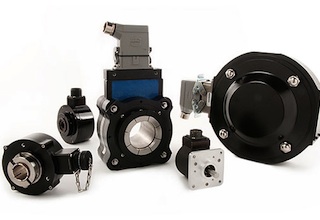 Allen Chasey
Allen Chasey
Eastern U.S. Sales Manager
Dynapar Corp.
Closed-loop feedback can address a host of issues in manufacturing and automation, including throughput, downtime, safety, performance and cost savings. If something’s moving and you need to know that it’s moving, there’s usually some form of feedback there, and it can range from simple to complex.
Feedback is required when tight speed control is needed or if you need position control, or you might need both, which happens in a lot of cases. Where to place the feedback device and what type of device is really dependent upon the application.
1: Reduce downtime. Downtime is bad, there’s just no two ways around it. Nobody’s happy when a machine is not running. Plus, you don’t want to be chasing problem calls all day long for your customers or having to fly out in the middle of the night, to come back to fix a machine that’s down.
If you’re a user of a piece of equipment, you don’t want your plant manager on your case about how you’re losing thousands of dollars every minute because your machine isn’t behaving. Nobody likes to be in that position.
Although the feedback device itself may or may not be the problem, it can alert you when things are going wrong. Losing a few hundred-dollar encoder versus a $10,000 motor or piece of capital equipment is definitely the lesser of two evils. On-board diagnostics that a lot of encoders are implementing these days can help. On some absolute encoders, for example, monitoring temperature or speed can be done internally at the sensor level, which can be reassuring to a design engineer.
2: Improving speed control. Go fast, but make sure it’s a good fast and not a bad fast. What are we talking about with speed control? Well, you can go fast and you can go slow and in many cases going really fast doesn’t necessarily require feedback unless you’re talking about a servo loop, which is critically important because you’re compensating a motor. When you go slow and you don’t want to go slow, feedback becomes really critical. When you go slow, you need resolution.
For instance, an AC motor may be rated for a specific speed which will be on the motor’s nameplate. It can be much faster than what the motor is actually being run at, so you might see on the nameplate a rating for 1800 RPM, according to the speed and torque, but in reality it may be in an application where it’s running at a fraction of that speed. In pumping applications, for example, this can be especially critical. If you’re controlling volume you want to control speed. Extruders, industrial pumps and even small biomedical peristaltic pumps all can benefit from closed-loop feedback. This is true for a variety of different areas, but some other areas where this is a benefit is in mining vehicles which have benefitted from closed loop feedback, improving the vehicle’s performance.
3: Stopping unsafe motion. Another advancement in closed-loop systems as it relates to the feedback device is safety. This is about how closed loop feedback can help ensure safe performance and protect a machine, the product and the people. There are more and more designers requiring SIL products, where the feedback device itself is rated for safety.
SIL is Safety Integration Level and as the name implies, there are different levels of the approval and there are more and more applications that are requiring SIL. In some cases the overall system requires a SIL rating and in some cases they are needed at the component level as well.
4: Performance. In the end, it’s really all about system performance. To monitor the process and make sure it’s performing optimally, use closed-loop feedback to provide real-time data and a range of positions or speeds.
5: Make your equipment last. All of these points add up to equipment lasting longer. The bottom line is if there is movement in a system, there is going to be wear. We’re not going to cheat physics that easily, but we can use feedback to help us plan for the inevitable.
This was adapted from a webinar on the benefits of closed-loop motion control feedback. For the full webinar, click here.







Leave a Reply
You must be logged in to post a comment.